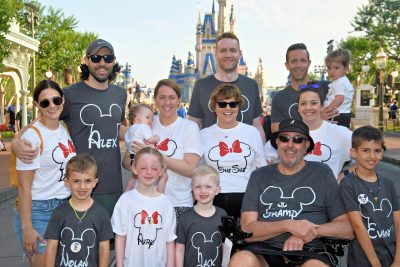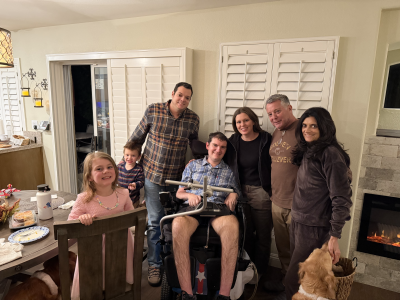Updated October 2021: Check out new results from Dr. Estela Area-Gomez in Nature Scientific Reports
The entire ALS community—patients, researchers, biotechs, doctors, regulators alike—agree on one thing: we need better biomarkers for ALS. But what makes a useful biomarker? In order to deliver better treatment options to patients—the right therapy, at the right time, measuring the right outcomes–we need several types of biomarkers, each with different requirements. Among the most important:
1. Diagnostic biomarkers: neurologists agree that we have the best chance of meaningful intervention in the ALS disease process if we treat early—but currently, ALS remains a diagnosis of exclusion, meaning that patients often spend months undergoing invasive, nerve-wracking, inconclusive testing until other conditions are ruled out and/or their ALS symptoms become more dramatic. By this point, motor neuron loss is already significant, and patients face a ticking clock to qualify for most clinical trials. A good diagnostic biomarker—i.e., a simple blood test that could reveal early ALS signs— would accelerate ALS diagnosis and allow for earlier therapeutic interventions.
2. Disease stratification biomarkers: ALS is a complicated brain disease, made more challenging to treat because of its heterogeneity. Research has identified more than 50 genes that can cause ALS, and multiple biological processes are involved. Even with research advances, it largely remains a mystery that some ALS starts in the throat, and some starts in the foot—that some people’s motor neurons degenerate rapidly, and some very slowly. Identifying biomarkers that could predict a particular person’s ALS disease course would mean sea change in better patient care and clinical trial design.
3. Treatment response/mechanistic biomarkers: To date, pre-clinical drug success in laboratory models of ALS has not correlated to clinical trial success in people with ALS. One major reason: we don’t have a way to test in people the outcomes that scientists test in laboratory models. For example, researchers can count whether more motor neurons survive following drug treatment in a laboratory model of ALS, but we have no way of counting the number of surviving motor neurons in a person—instead, neurologists have to rely on less direct measures to try to infer what a potential treatment is doing in a person with ALS. Identifying biomarkers that correlate preclinical and clinical studies is an essential step toward better drug development in ALS.
When we launched the Project ALS Therapeutics Core at Columbia (THE CORE), we realized that to improve drug development in ALS, we must in parallel develop more sensitive, translatable biomarkers. An ideal biomarker would be usable for all of the above—and would be easily accessible through a simple blood test, so it could be easily used across the entire ALS field.
Among other efforts, we established a neurolipidomics unit at THE CORE led by Estela Area-Gomez, PhD, with the goal of validating an intriguing finding from an earlier pilot study: ALS patients have a unique plasma lipid signature, or pattern of fat levels in their blood, when compared not only to healthy people but also to people with other brain diseases. Dr. Area-Gomez and took advantage of new technologies to analyze over 500 distinct lipid species, and found that the types of fats circulating in the blood of ALS patients are different than those found in healthy people. Even more critically, the lipid signature Dr. Area-Gomez identified in ALS is distinct from other neurodegenerative diseases, including Alzheimer’s disease and Parkinson’s disease, and reveals both commonalities and differences from the lipid signature of primary lateral sclerosis (PLS), a motor neuron disease that compared to ALS is slower moving and less lethal. The apparent specificity of the lipid signature is especially important, because current blood-based biomarkers of ALS—like neurofilament levels—are markers of general neuronal injury and are not unique to ALS, making them less useful in the diagnostic process.
Through THE CORE, Dr. Area-Gomez is working on parallel tracks to validate and deepen our understanding of this lipid signature. With the in vivo unit, she is testing the lipid signature of ALS mice receiving potential treatments to evaluate whether a shift in lipid levels correlates with positive drug outcomes—and how lipid changes correlate to the biological mechanisms of ALS. With the clinical research unit and external partners like Mass General Hospital’s ALS Living Library, she is validating the ALS lipid signature from multiple patient cohorts, including (1) asymptomatic carriers of ALS genes through the ALS Families Project, to understand potential different between genetic subtypes and identify early—pre-symptomatic—lipid alterations that could be used in the diagnostic battery, (2) longitudinal samples to evaluate how this signature changes as ALS progresses, and (3) samples from patients who have received experimental treatments or dietary supplements, to evaluate how clinical interventions impact this biomarker.



